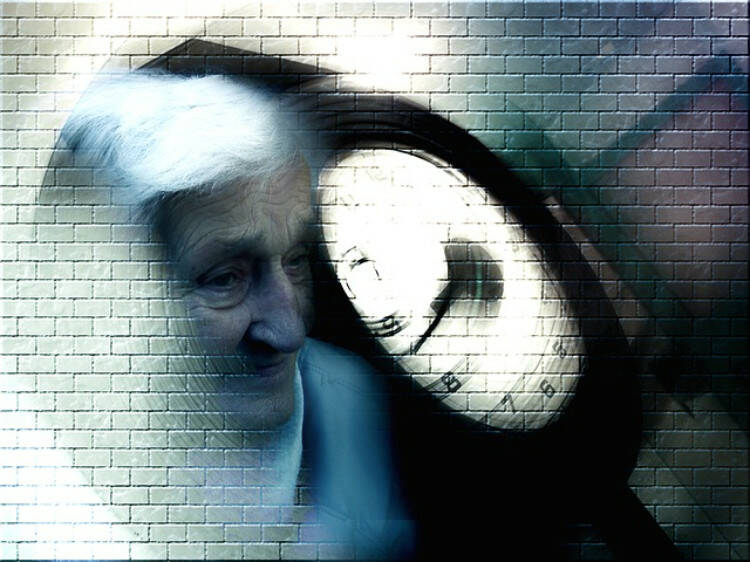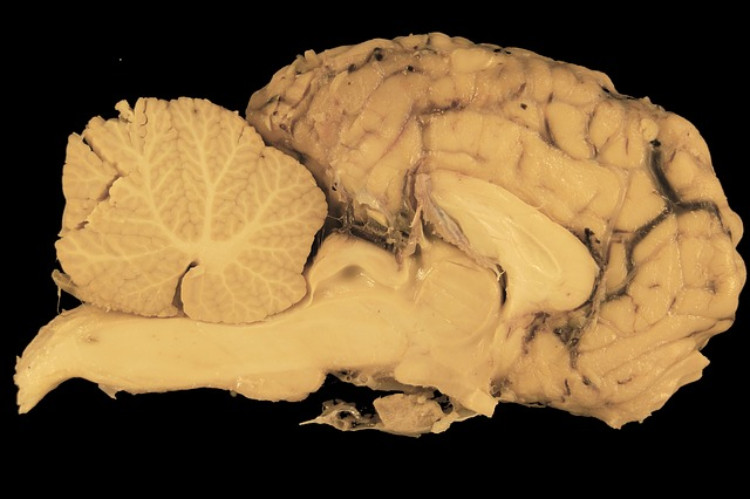- centrummemory.sk - What is dementia?
- upjs.sk - Dementia
- spoluprotidemencii.sk - Stages of dementia
- health.gov.sk - Dementia in Alzheimer's disease
- alzheimer.sk - Behavioural disorders
- health.gov.sk - Vascular dementia
Dementia can be even at a young age. Know the first signs and differences

Dementia is a mental disorder arising from an organic basis with a consequent impairment of general mental activity. It is mistakenly attributed only to the elderly, but young people can suffer from it too. What are the causes of dementia in the young?
Article content
Dementia is a disease, but it is also a symptom of a disease.
People often mistakenly attribute it to the elderly, but it can affect anyone, even at a young age.
Which diseases cause dementia?
At the forefront is the decline of previously acquired intellectual abilities.
The name comes from the Latin "de mentio", which translates as departing in spirit/mind.
In the 18th century, all mental disorders were referred to by this term.
It mainly affects old people - old age dementia.
However, various diseases can result in the development of dementia even at a young age.
How does dementia manifest itself?
Memory is usually the first to be affected.
It is the reasoning ability by which we retain and retrieve information we have already learned.
Disorders are evident at the level of both short-term and long-term memory.
Logical thinking, which normally provides us with a reflection of reality and the connections between phenomena, is lost.
IQ as a measurable level of intellectual ability is declining.
We owe our general outlook to full orientation.
People with dementia suffer from disorientation.
They may be disoriented by the person. They do not recognize immediate relatives and acquaintances. Worse, they sometimes do not know who they are.
They also tend to be disoriented by place and time.
The ability to learn, i.e., remember, is also profoundly impaired.
It is problematic for a demented person to repeat what has been said before in a short period of time.
Sometimes we talk about days, in more severe cases about minutes.
This is also due to a simultaneous decrease in attention span, general slowness, bradypsychism, imprecision.
Impairment of sound judgment greatly affects affectivity and behavior.
There is a general decline in the personality of the person as a whole.
He becomes more psychologically unstable and uncritical.
Aggression increases, outbursts of affectivity, frequent mood disorders, sleep disturbances. May be accompanied by delusions and hallucinations.
Stages of dementia (MMSE - mini mental state exam)
- Mild dementia - Characterised by only mild memory loss, resulting in changes in previous habits and minimal behavioural changes. Increased forgetfulness and transient orientation. They perform less well at work and in everyday activities, and have difficulty concentrating. The above problems become increasingly difficult. They do not want to admit that anything is wrong with them. Therefore, they often succumb to anxiety and depression.
- Intermediate dementia - Cognitive impairment, significant impairment of orientation (unable to return home). They forget basic information about themselves, even normal daily activities become a problem for them. Social contact is limited. They require help from others.
- Severe dementia - Severe cognitive impairment, the patient is incapable of making judgements and requires continuous, specific care. They cease to perceive their surroundings, delusions and hallucinations are frequent, with behavioural disturbances, and the patient's aggressiveness increases. They gradually lose motor functions, and urine and faeces leak.
What causes dementia at a young age?

The aetiology is based on the damage to the brain and cerebral vessels caused by the primary disease. However, secondary heredity has also been demonstrated in certain specific cases.
Most of us think of dementia as an old person who forgets things as he or she gets older. This is largely true. But young age does not guarantee that we will be spared this insidious disease.
Dementia or its causes are divided into basic categories according to the International Classification of Diseases (ICD 10).
Of these, the first two categories relate to the elderly. The second two describe conditions or diseases that subsequently cause dementia syndrome affecting all ages.
Alzheimer's disease (morbus Alzheimer) is a serious brain disease for which there is still no causal treatment today.
Therapy is predominantly symptomatic - treating the symptoms.
The exact cause of m. Alzheimer is not entirely clear. However, some links to heredity have been found.
Memory impairment, initially short-term, predominates. It is a problem with remembering newly acquired information.
In later stages, long-term memory is also impaired.
There are also learning and orientation disorders.
Speech impairment is common.
The patient wants to say something, but cannot find the right words, even though he understands. Later, he no longer understands the questions, so he cannot answer.
Vascular dementia
vascular dementia occurs as a result of a disorder of the blood vessels in the brain.
People treated for diabetes mellitus, high blood pressure or atherosclerosis of the brain vessels are at risk.
These are diseases that result in weakening and subsequent damage to or rupture of the blood vessel wall.
In untreated patients, of course, the risk associated with the underlying diseases increases and there is a greater likelihood of stroke (apoplexy, ictus).
With each cerebral infarction, the likelihood of developing dementia increases.
Dementia in other diseases
Dementia in other diseases is a dementia that arises on a different basis from m. Alzheimer and is not vascular dementia.
It does not only affect the elderly. It can arise in middle age in people suffering from various diseases.
- It is, for example, a disease such as sclerosis multiplex. It is an inflammatory, immune-mediated demyelinating and axonal disease of the central nervous system affecting people as early as around the age of 30. Onset of the disease at a younger age and after the age of 50 is less likely.
The prognosis of the disease is unfavourable.
Ultimately, it manifests itself, among other things, in various degrees of dementia. - Another such disease is Parkinson's disease.
The cause is not yet known, but it is classified as a degenerative disease with gradual neuronal death.
It occurs mainly around the age of 55.
The risk increases with age.
Memory impairment is one of the psychological symptoms of this disease. - Less well known is Huntington's disease.
It is a not very common inherited disease of the central nervous system.
It starts to appear around the age of 35 to 50.
Symptoms progress over the next 10 to 20 years.
In the early stages, it is just mood changes, behavioural changes, depression, slowed thinking, impaired ability to understand and learn, progressing to dementia.
Impaired motor (movement) function causes involuntary, accelerated to uncoordinated movements accompanied by twitching of facial muscles (grimaces). - Creutzfeldtova-Jakobova choroba je sporadické neurodegenerativní onemocnění mozku.
Poprvé bylo popsáno v roce 1920 německým neuropatologem H. G. Creutzfeldtem. O něco dříve ji rozpoznal německý neurolog A. M. Jakob.
Přenos je dědičný z matky na dítě s 50% pravděpodobností. Sporadická forma je zapříčiněna samovolnými změnami v mozkové tkáni, infekční forma se přenáší z nemocného zvířete požitím infikovaného masa (BSE). Případně je možný i iatrogenní přenos například při transplantaci.
Průběh je charakteristický poruchami paměti (zastřená mysl), porucha koordinace s následnými častými pády, závratě, halucinace, záchvaty strachu.
Onemocnění progreduje až do těžkého stavu demence. Nemocný je postupně zcela nehybný – upoutaný na lůžko s úplným vymizením osobnosti. - Nieman-Pickovu chorobu řadíme mezi onemocnění metabolická. Konkrétně se jedná o poruchu metabolismu tuků.
Ty se ukládají převážně v játrech, slezině a kostní dřeni.
Rozděluje se na tři základní typy. Typ A postihuje již novorozence.
Potíže se začínají objevovat již v prvních týdnech života a končí smrtí kolem 1. až 3. roku.
Projevuje se neprospíváním novorozence, zvracením, průjmy, svalovou slabostí až úplnou psychomotorickou poruchou.
Typ B může vzniknout v dětském věku i v dospělosti. U tohoto typu však intelekt nebývá postižen.
Typ C postihuje různé věkové skupiny od narození až do dospělosti. Projevy jsou jak motorické, tak i na psychické úrovni s prohlubující se mentální retardací.
Léčba neexistuje, existují jen pokusy o transplantaci kostní dře - Onemocnění vyskytující se i u mladých lidí způsobující postupné poruchy i kognitivních funkcí je epilepsie.
Každému z nás se může stát, že dostane během života epileptický záchvat buď po úrazu hlavy, nebo nadměrným požitím alkoholických nápojů. To ovšem neznamená, že je epileptik a rozvine se u něj předčasná demence.
Epilepsii jako onemocnění diagnostikuje výhradně lékař na základě anamnesticky potvrzených opakovaných záchvatů a dalších vyšetření, například elektroencefalografie (EEG) s přítomností patologických elektrických vzruchů v mozku a následně vyšetření potřebných k odhalení její příčiny.
U pacientů s dlouholetou epilepsií se postupně může začít projevovat předčasná demence.
Málokdy však dochází k úplné degradaci osobnosti.
This is not only caused by the diseases mentioned above, which even modern medicine cannot cope with. Sometimes it is the person's own fault.
- The most common causes of non-disease-related dementia in our country are alcoholism or excessive use of various drugs.
These substances also leave their mark on the brain, and not just on the liver as many people think. Their regular use leads to brain atrophy with the subsequent development of dementia.
Pseudodementia is not a real decline in intellectual abilities, but a transient state with a decline in intellectual abilities.
It arises as a post-traumatic reaction (after a stressful, traumatic experience) and disappears when this factor is removed.
Pseudodementia is characterised by a loss of the most elementary abilities, while the more complex ones are preserved.
Absurd answers (I am 200 years old) or an imaginative reversal in driving (writing with the opposite end of the pen) are at the forefront, as for example in the transient gloomy state of Ganzers syndrome.
In the case of pseudodementia, it is not a simulation.
This transient state is not realised by the sufferer.
Diagnosis and treatment
There is no specific treatment due to the variety of causes for the development of dementia.
Any person who begins to show the symptoms described in the mild stage should be fully examined by a doctor. Diseases that could be causing the condition are gradually eliminated.
Most diseases can be ruled out or confirmed by morphological examination methods, namely computed tomography (CT) or magnetic resonance imaging (MRI), where the doctor can assess changes in brain tissue.
This mainly involves brain atrophy - a shrinking volume of brain tissue.
It cannot be cured, but its progression can be slowed down, mainly with drugs that improve metabolism and blood flow through the brain tissue.
Antioxidants and vitamins are also useful to slow down degenerative changes.
In genetic diseases, DNA testing is performed.
If all tests are negative, one should start thinking about psychiatric management of the condition.
Treatment is mainly symptomatic with respect to the predominant problem.
Interesting resources










